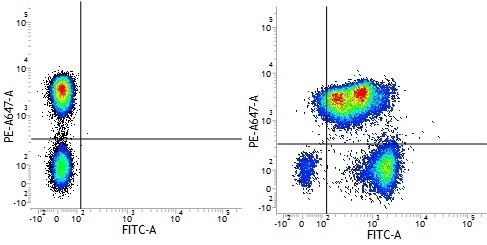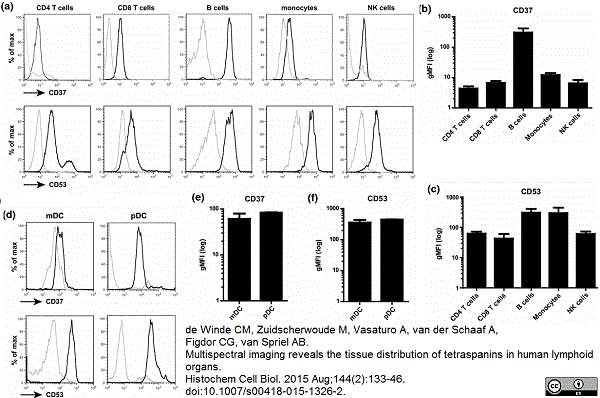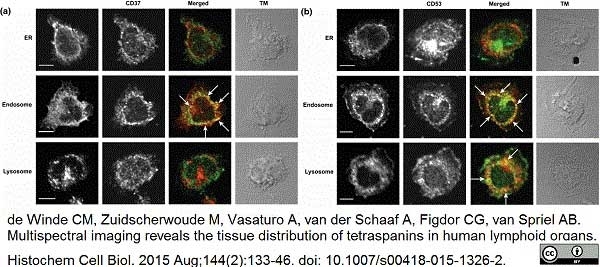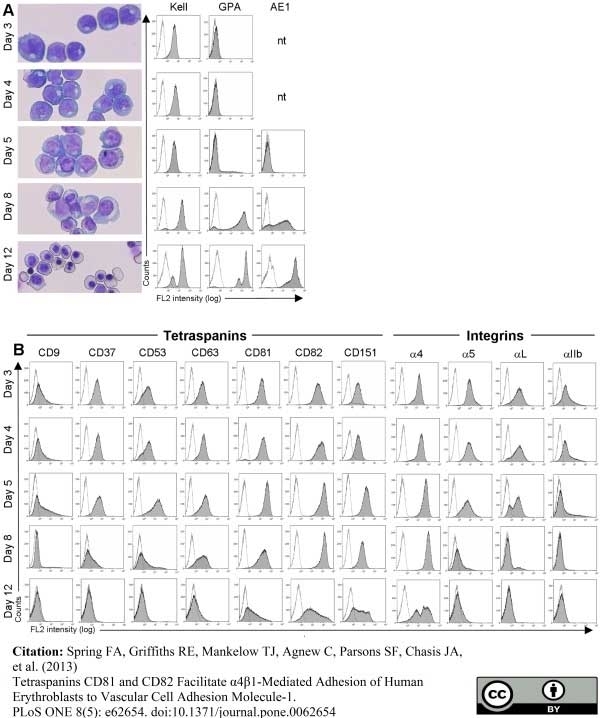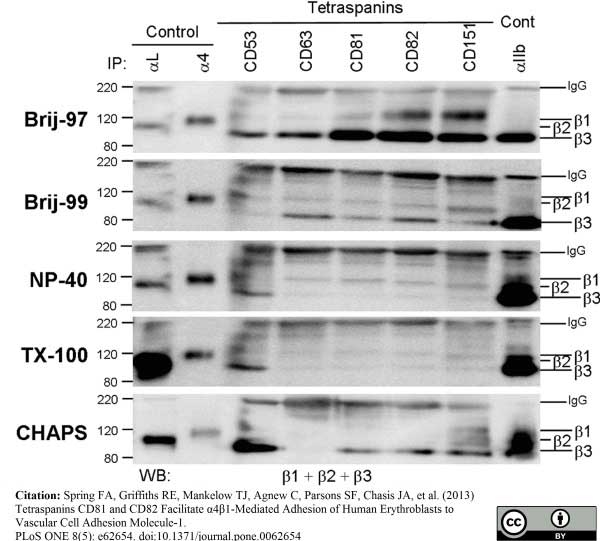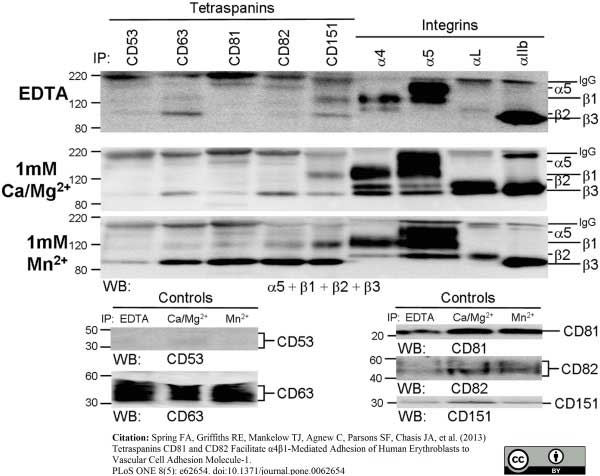CD53 antibody | MEM-53






Mouse anti Human CD53
- Product Type
- Monoclonal Antibody
- Clone
- MEM-53
- Isotype
- IgG1
- Specificity
- CD53
| Mouse anti Human CD53 antibody, clone MEM-53 recognizes the human CD53 cell surface antigen, also known as Tetraspanin-25. CD53 is a 219 amino acid multi pass transmembrane glycoprotein of 32-42 kDa. CD53 is expressed by all leucocytes, but is absent from erythrocytes and platelets. |
- Target Species
- Human
- Product Form
- Purified IgG - liquid
- Preparation
- Purified IgG prepared by affinity chromatography on Protein A from tissue culture supernatant
- Buffer Solution
- Phosphate buffered saline
- Preservative Stabilisers
0.09% Sodium Azide - Approx. Protein Concentrations
- IgG concentration 1 mg/ml
- Regulatory
- For research purposes only
- Guarantee
- 12 months from date of despatch
Avoid repeated freezing and thawing as this may denature the antibody. Storage in frost-free freezers is not recommended.
| Application Name | Verified | Min Dilution | Max Dilution |
|---|---|---|---|
| Flow Cytometry | 1/10 | 1/25 | |
| Immunohistology - Frozen | |||
| Immunoprecipitation | |||
| Western Blotting 1 |
- 1Clone MEM-53 recognizes human CD53 under non-reducing conditions.
- Flow Cytometry
- Use 10ul of the suggested working dilution to label 106 cells in 100ul.
| Description | Product Code | Applications | Pack Size | List Price | Your Price | Quantity | |
|---|---|---|---|---|---|---|---|
| Mouse IgG1 Negative Control | MCA928 | F | 100 Tests |
|
Log in | ||
| List Price | Your Price | ||||||
|
|
Log in | ||||||
| Description | Mouse IgG1 Negative Control | ||||||
References for CD53 antibody
-
Bazil, V. et al. (1989) Monoclonal antibodies against human leucocyte antigens. III. Antibodies against CD45R, CD6, CD44 and two newly described broadly expressed glycoproteins MEM-53 and MEM-102.
Folia Biol (Praha). 35 (5): 289-97. -
Angelisová P et al. (1990) The human leucocyte surface antigen CD53 is a protein structurally similar to the CD37 and MRC OX-44 antigens.
Immunogenetics. 32 (4): 281-5. -
Mollinedo, F. et al. (1997) Recurrent infectious diseases in human CD53 deficiency.
Clin Diagn Lab Immunol. 4: 229-31. -
Matsumoto K et al. (1999) Functional expression of transmembrane 4 superfamily molecules on human eosinophils.
Int Arch Allergy Immunol. 120 Suppl 1: 38-44. -
Spring, F.A. et al. (2013) Tetraspanins CD81 and CD82 facilitate α4β1-mediated adhesion of human erythroblasts to vascular cell adhesion molecule-1.
PLoS One. 8 (5): e62654. -
Tippett, E. et al. (2013) Characterization of tetraspanins CD9, CD53, CD63, and CD81 in monocytes and macrophages in HIV-1 infection.
J Leukoc Biol. 93 (6): 913-20. -
de Winde, C.M. et al. (2015) Multispectral imaging reveals the tissue distribution of tetraspanins in human lymphoid organs.
Histochem Cell Biol. 144 (2): 133-46. -
Zuidscherwoude, M. et al. (2015) The tetraspanin web revisited by super-resolution microscopy.
Sci Rep. 5: 12201.
View The Latest Product References
-
Dunlock, V.E. et al. (2022) Tetraspanin CD53 controls T cell immunity through regulation of CD45RO stability, mobility, and function.
Cell Rep. 39 (13): 111006.
- RRID
- AB_2075724
- UniProt
- P19397
- Entrez Gene
- CD53
- GO Terms
- GO:0005886 plasma membrane
- GO:0016021 integral to membrane
- GO:0007165 signal transduction
MCA723G
If you cannot find the batch/lot you are looking for please contact our technical support team for assistance.
Please Note: All Products are "FOR RESEARCH PURPOSES ONLY"
View all Anti-Human ProductsAlways be the first to know.
When we launch new products and resources to help you achieve more in the lab.
Yes, sign me up